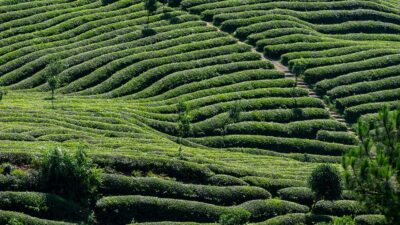Coffee is more than just a morning ritual; it’s a global phenomenon that brings people together, inspires creativity, and fuels our daily lives. But how does a simple coffee bean navigate its way from the lush fields of tropical farms to your favorite café? This article will take you on an enlightening journey through the stages of coffee production, exploring the origins, processes, and cultural significance of this beloved beverage.
The Origins: From Tree to Bean
Coffee Cultivation
The journey of coffee begins in the sunny highlands of countries such as Ethiopia, Colombia, Brazil, and Vietnam. Coffee plants thrive in specific climates—requiring a mixture of altitude, temperature, and rainfall to produce the best beans. The two most popular coffee species are Arabica and Robusta. Arabica beans are known for their complex flavors and aroma, while Robusta beans tend to be stronger and more bitter.
Farmers play a crucial role in coffee cultivation. They employ traditional farming methods passed down through generations, often using sustainable practices to ensure healthy crops and preserve the environment. Growing coffee is labor-intensive; each cherry must be carefully harvested at the right time for optimal flavor.
The Harvesting Process
Once ripe, coffee cherries are either hand-picked or harvested mechanically. Hand-picking allows for selective harvesting—only the cherries at peak ripeness are collected—while mechanical harvesting can be more efficient but may lead to unripe cherries being included. Following the harvest, the cherries undergo processing, which separates the beans from the fruit.
Processing: Transforming Cherries into Beans
The Processing Methods
The next step in the coffee journey is processing, which can significantly influence the flavor profile of the coffee. There are primarily two methods of processing: the dry method (natural) and the wet method (washed).
-
Dry Method: Cherries are spread out in the sun to dry. As they dry, the sugars and flavors develop, resulting in a fruity and complex taste.
- Wet Method: Cherries are pulped to remove the outer skin and then fermented to separate the beans from the mucilage. This method often yields cleaner and brighter flavors.
After processing, the beans are dried and then hulled to remove any remaining parchment layer, resulting in green coffee beans ready for export.
Roasting: The Art of Flavor Development
The journey continues as green beans are shipped to roasteries around the globe. Roasting transforms the green beans into the aromatic brown coffee we know and love. This process is both an art and a science, as roasters carefully control temperature and time to develop specific flavors.
Light roasts retain more of the original bean’s characteristics, while darker roasts exhibit bolder flavors and rich aromas. Each roasting style has its passionate proponents and impacts how the coffee interacts with water during brewing.
Brewing: Crafting the Perfect Cup
Once roasted, coffee reaches its final destination: cafés and homes worldwide. The brewing method chosen can significantly affect the final taste, making this stage essential for coffee connoisseurs. Common brewing methods include:
- Drip Coffee: A classic and convenient method that brews coffee by dripping hot water over ground beans.
- French Press: A full immersion method that allows coffee grounds to steep before being separated by pressing a plunger.
- Espresso: A concentrated brewing method that forces hot water through finely-ground coffee, resulting in a rich flavor.
- Pour-over: A manual method that offers control over the brewing time and water temperature, resulting in a clean and flavorful cup.
Cultural Significance: Coffee Around the Globe
Coffee’s journey is not just about production; it also carries deep cultural significance around the world. In Ethiopia, the birthplace of coffee, traditional coffee ceremonies symbolize hospitality and community. In Italy, coffee culture is intertwined with social life, where the espresso is an integral part of daily routines.
Each country has its unique customs surrounding coffee consumption, from Vietnam’s iconic egg coffee to Sweden’s "fika," a coffee break often paired with pastries. These rituals enrich the global coffee experience, making it a shared joy that transcends borders.
Conclusion: A Global Connection
From bean to brew, the journey of coffee encapsulates a rich tapestry of traditions, methods, and flavors that span the globe. Each cup of coffee is a testament to the hard work of farmers, roasters, and baristas who contribute their skills and passion to this beloved beverage. So, the next time you sip your coffee, take a moment to appreciate the incredible journey that brought it to your cup and the myriad cultures it connects us to around the world. Embracing coffee is not just a personal indulgence but a celebration of a global community bonded by our love for this remarkable drink.



